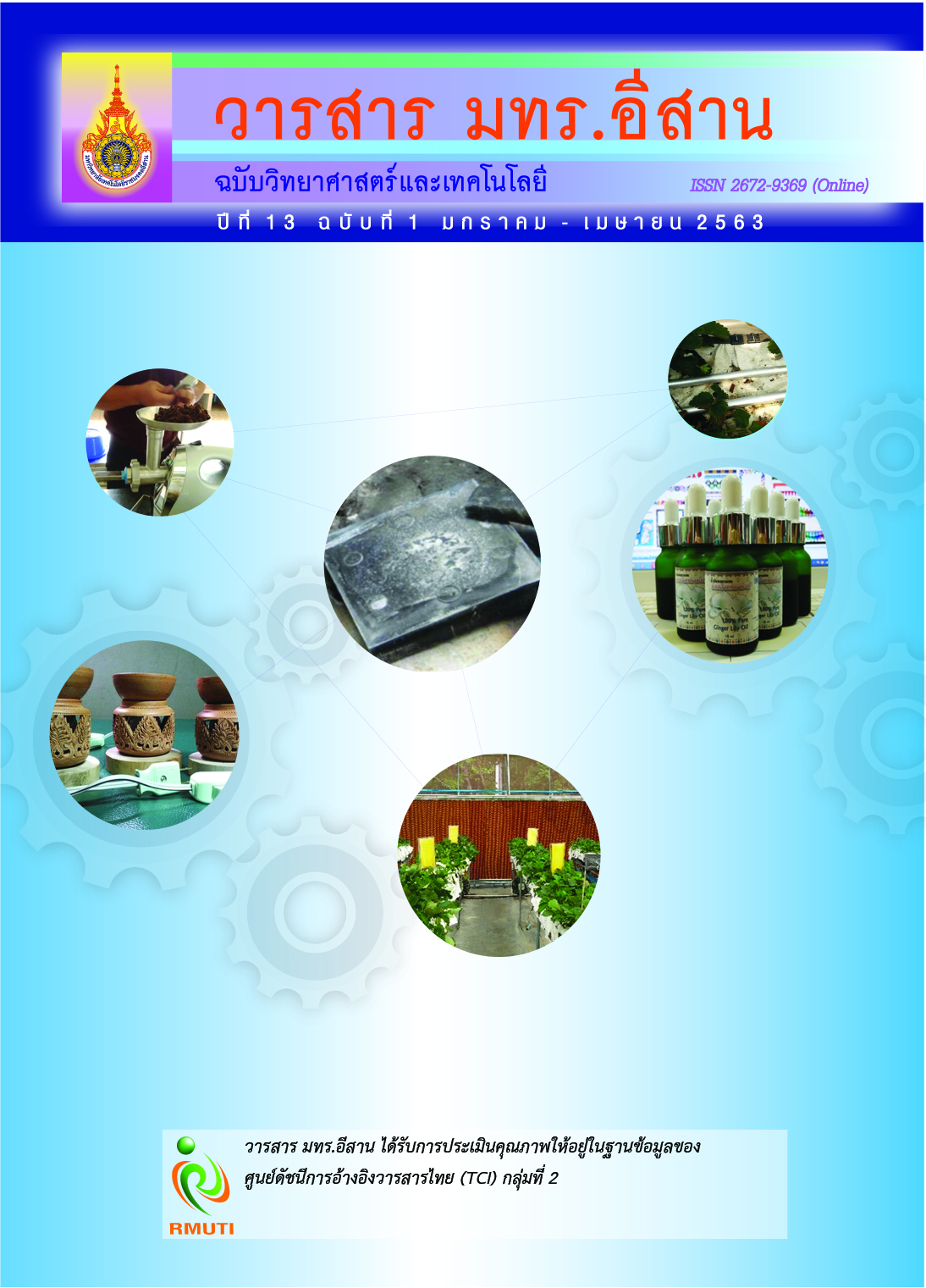Influence of Double Artificial Aging on Microstructure and Mechanical Properties of Semi Solid Aluminium Alloy 2024
Main Article Content
Abstract
The purpose of this research was to study the influence of one step artificial aging and two step aging on microstructure and mechanical properties of semi-solid aluminium alloy 2024. The samples were taken in solution heat treatment at 505 oC for 4 hours followed by quenching in the water at room temperature. The one step aging was carried out at 190 oC for 6, 9, 12, 15 and 18 hours, respectively. While, two step aging were initially aged at 110 oC for 8 h (first aging step) and then aged at 170 oC for 0.5, 1, 1.5, 2, 2.5, 3, 3.5 and 4 hours (second aging step), respectively. The microstructure of the samples was examined using the optical microscopy (OM). Hardness test (Rockwell scale B) and ultimate tensile strength were to evaluate mechanical properties. The results showed that at after artificial aging process the microstructure of semi-solid aluminium alloy 2024 consist of eutectic phase which distributed at the grain boundary of globular alpha-aluminium grain (α-Al). The one step aging at 190 oC for 15 hours provided both maximum hardness and ultimate tensile strength of 82.7 HRB and 395.3 MPa, respectively. As the same time, two step aging at initially on aged at 110 oC for 8 hours and then aged at 170 oC for 1 hour yielded both maximum hardness and ultimate tensile strength of 108 HRB and 415.70 MPa, respectively. It was obvious that both hardness and ultimate tensile strength of two step aging were higher than that of one step aging with and lesser time for artificial aging.
Article Details
References
Iron and Steel Institute of Thailand. (2014). Survey Status of Industry for Non-Ferrous Metals. Bangkok: Iron and Steel Institute of Thailand (in Thai)
Wijit, P. (1999). Melting and Heat Treatment of Aluminium Technology Casting. National Metal and Materials Technology Center (in Thai)
Reis, D., Couto, A., Domingues, N., Hirschmann, A., Zepka, S., and Moura, C. (2012). Effect of Artificial Aging on the Mechanical Properties of an Aerospace Aluminum Alloy 2024. Defect and Diffusion Forum. Vol. 326-328, pp. 193-198. DOI: 10.4028/www.scientific.net/DDF.326-328.193
Siriwan, P., Sirikul, W., Thawatchai, P., and Jessada, W. (2011). Microstructure Evolution During Solution Heat Treatment of Semisolid Cast 2024 Aluminum Alloy. Advanced Materials Research. Vol. 339, pp. 714-717. DOI: 10.4028/www.scientific.net/AMR.339.714
Chemingui, M., Khitouni, M., Jozwiak, K., Mesmacque, G., and Kolsi, A. (2010). Characterization of the Mechanical Properties Changes in an Al-Zn-Mg Alloy After a Two-Step Ageing Treatment at 70o and 135 oC. Journal of Material and Design. Vol. 31, Issue 6, pp. 3134-3139. DOI: 10.1016/j.matdes.2009.12.033
Gao, N., Starink, M., Kamp, N., and Sinclair, I. (2007). Application of Uniform Design in Optimization of Three Stage Ageing of Al-Cu-Mg Alloys. Journal of Materials Science. Vol. 42, pp. 4398-4405. DOI: 10.1007/s10853-006-0659-6
Emani, S., Benedyk, J., Nash, J., and Chan, D. (2009). Double Aging and Thermo Mechanical Heat Treatment of AA7075 Aluminum Alloy Extrusion. Journal of Materials Science. Vol. 44, pp. 6384-6391. DOI:10.1007/s10853-009-3879-8
Elgallad, E., Zhang, Z., and Chen, X. (2015). Effect of Two-Step Aging on the Mechanical Properties of AA2219 Dc Cast Alloy. Materials Science and Engineering. Vol. 625, pp. 213-220. DOI: 10.1016/j.msea.2014.12.002
Jessada, W. (2011). Technology of Semi-Solid. National Metal and Materials Technology Center, Thai Foundry Association. pp. 48-53 (in Thai)
Romadorn, B., Rangsinee, C., and Jessada, W. (2009). Development of the Gas Induced Semi-Solid Metal Processing for A356 Aluminum Alloy. The 7th PSU Education Conference “Higher Education for All: Surviving in Times of Change. Prince of Songkla University. pp. 549-554 (in Thai)
Siriporn, K., Sirikul, W., Thawatchai, P., and Jessada, W. (2009). Influence of Heat Treatment Processing Parameters on the Hardness and the Microstructure of Semi-Solid Aluminum Alloy A356. Journal of Metals, Materials and Minnerals. Vol. 18, No. 2, pp. 93-97
Sirikul, W. (2000). Physical Metallurgy. Department of Mechanical Engineering Faculty of Engineering, Prince of Songkla University (in Thai)


